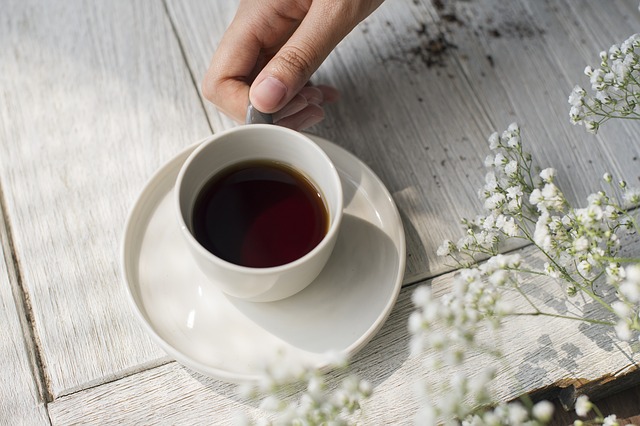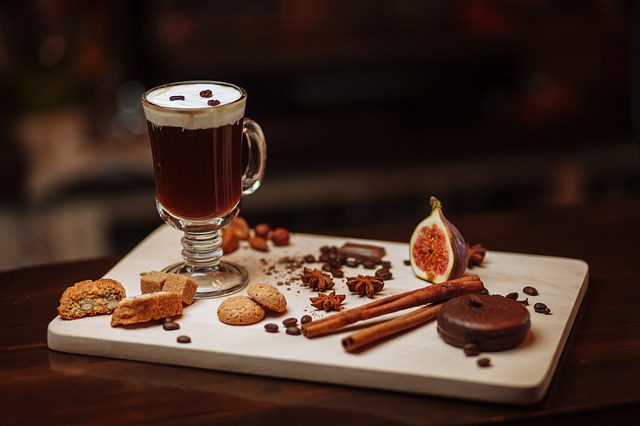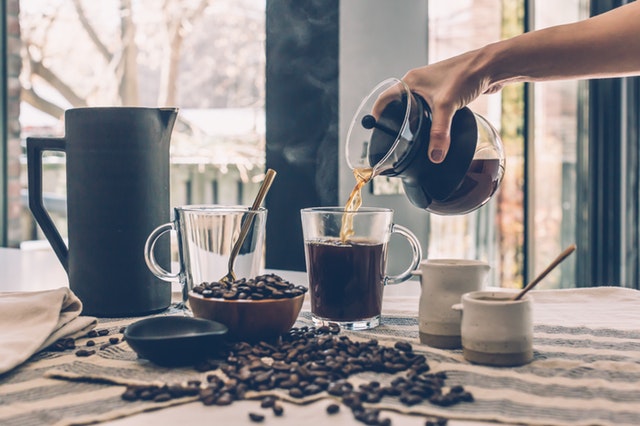Here are some facts about coffee you may not have known before. Coffee is the second most sought-after commodity, following oil, and preceding gas and sugar, among others. We drink more than 500 billion cups of coffee worldwide every year, and about 25 million of people make their living by growing and selling the beans or making and selling the final product that you probably have somewhere in your cupboards as you read this.
No matter your personal preferences, it’s safe to say that coffee is a big deal. If you don’t like it and avoid it like a plague, you belong to the minuscule minority of people. Still, if you’re reading this, chances are that you are a fellow coffee lover, who cannot imagine his/her day without a nice caffeine-based drink to boost your mornings. Of course, while we do most commonly associate coffee-drinking with mornings, it’s not the only time of the day when enjoying this beverage is appropriate.
People all over the world use coffee as an excuse to hang out with their friends and enjoy a round of gossip. “Would you like to go for a cup of coffee” is a phrase that we use to ask old friends to go and catch up, but also to ask a crush out on a date. For many learning how to start selling coffee online is a great business jump start. In some parts of the world, a cup of coffee is a mandatory part of showing hospitality and will wait for you whenever you visit somebody’s home.
Still, no matter how universal the love of coffee seemingly is for all parts of the world, there are plenty of differences in the ways people choose to enjoy the beverage. Here are some of the ways people in various parts of the world prepare and drink coffee.
1. Turkey
Turkey’s coffee tradition is really old, and the first coffeehouses date from the 1500s! While the Turkish people drink both espresso and Nescafe variants, the true Turkish coffee is something else entirely. The beans are crushed into a fine powdery substance, and then shortly boiled in a pot.
The drink is served in small cups, and the coffee grounds settle at the bottom. It’s traditionally sweetened with sugar, but you can ask for an unsweetened version as well. It has a very strong flavor, and it’s usually drunk in the mornings and served to guests. In addition to this, Turkish people use coffee for fortune-telling.
In a manner similar to tea-leaves reading, after drinking the coffee, one will turn the cup upside down to allow the grounds to cool and drain them of any extra moisture. The shapes that the grounds form are interpreted, thus revealing the future of the drinker. The same drink and the traditions associated with it can be found (by different names) in Greece, in the Balkans, and in parts of Northern Africa.
2. Italy
As the country that gave birth to espresso, Italy is no stranger to good coffee. However, their rules for coffee-drinking may seem a bit strange, if you’re not from there.
For example, cappuccino and latte – both of which also originated in Italy – are usually only drunk before breakfast, because the Italian people don’t like the idea of having hot milk on a full stomach! On the other hand, you can enjoy a simple espresso all day long.
3. The USA
As the British introduced outrageous taxes on tea, what was there for the Americans to do, other than turn to the remaining alternative: coffee.
The love that the Americans have for the beverage is incredible and all-consuming, and it gave birth to the modern-day temple of worship – the Starbucks. Knowing how to make flat white will make you an instant celebrity among your American friends, but fancy drinks are not the only way to enjoy coffee in the USA.
Americano, a shot of espresso with extra hot water, is said to be invented by American soldiers stationed in Italy during WW2. It was an attempt to make espresso more like “regular (drip) coffee” that is still served in many places throughout the vast country.
4. Ireland
The Irish, ever-optimistic about their beers and whiskeys, have found a way to make coffee even more fun. Irish coffee originated in the 1940s, and it consists of coffee, whiskey, and cream. Since then, there have been many variations on the topic – with different types of liquor used in the mix, but the original is still served in pubs and bars all around the world. It is traditionally an after-dinner drink, but it is not exactly frowned upon on chilly mornings either.
5. Japan
Perhaps a bit unexpectedly, Japan is the 4th country in the world based on average coffee consumption. The Japanese enjoy canned coffee (which is hardly popular anywhere else) and iced coffee the most. The canned version comes in a variety of flavors, and it’s very affordable. It is also very appropriate for their busy lifestyle, as it eliminates the need to wait or go to a café. Iced coffee is not what you would expect, though. While in many parts of the world the iced coffee is a kind of milky drink, in Japan it is usually strong, black coffee on ice.
6. Ethiopia
In Ethiopia, people have been drinking coffee for over 1000 years. It is still an extremely important part of their culture, and the preparation of the drink is a tradition in itself. The host prepares it in a table-side ceremony of sorts, and during the preparation, they do everything – from roasting and grounding to brewing – by themselves. There are different names for each cup, in accordance with the order in which you take them. The first cup is called “Abol”, the second is “Tona”, and the final is “Baraka”. Interestingly enough, they do not drink coffee with milk, but they do add either salt or sugar into the cup.
Clearly, coffee is a highly versatile substance that lends itself to creating imaginative and extremely tasty drinks. While you almost certainly have your own favorites, be open to different possibilities. Try mixing some of these up at home, or find places that offer out-of-the-ordinary kinds of coffee – and of course, when you travel, remember to taste all the different types at their source! It’ll add a new level of immersion into a foreign culture, and expand your understanding and love of coffee, so why not give it a go?







